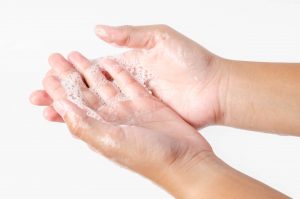When I first moved to the United States, I quickly learned that certain words in South Africa mean different things in America. Our cars have boots and bonnets (trunks and hoods), we stop at robots (traffic lights), and we have biscuits with our tea (cookies).

This can be confusing when moving to a new area, but one quickly adapts so as to be fully understood.
As my career progressed in the Water Industry, I observed that some people use different words to convey different meanings, and some of those words are not necessarily accurate. Furthermore, some don’t use those words in a way that benefits the consumer.
One of the most contentious and potentially harmful ones that I’ve observed over my almost three-decades in the industry, is the word “Softener”.
What is a water softener, how does it work, and what is NOT a softener?
Hard water is usually called “Hard”, because it is “Hard to lather”. So naturally, one would deduce that Soft water” would be easy to lather. However, people associate Hard water symptoms with more than just soap interactions. To many people, their water is “Hard”, because of the hard scale that forms on appliances, faucets, and fixtures, so to them, Soft water must also not form scale. This can be a confusing use of language.
Over the years, several innovative technologies have been introduced into the marketplace to address various hard water symptoms, like Ion exchange, Membrane separation, Radio Frequency Emitters, Magnets, Sequestering agents, pH reducers, Chelating agents, Crystallization media, Electrodeionization, and many others. Some are only effective at controlling scale, and some are effective at helping with both soap and scale. Unfortunately, there are also some that don’t seem to be effective at anything.
With everyone’s zeal to sell their products to as many people as possible, some sellers chose to call their technologies by names that don’t accurately describe them, causing confusion in the marketplace, as well as a lack of consumer-confidence in the industry at large. This had become such a contentious issue amongst some in the industry, that the WQA convened a task force specifically to update and clarify its Glossary of Terms.
WQA Glossary of Terms
Just as we consult an English Dictionary to understand English words, the Water Quality Association (WQA)’s Glossary of Terms is a helpful resource in helping to clarify what various water-industry terms mean.
The WQA’s Glossary of Terms defines Soft Water as “Water which contains less than 1.0 grain per gallon (17.1 milligrams per liter (mg/L) or parts per million (ppm)) of total hardness.”
and describes a Water Softener as:

“A device, product, or equipment that reduces the presence of water hardness to less than 1 gpg expressed as calcium carbonate (CaCO3) equivalent via chemical, physical, or other means. In residential and commercial applications, the most common water softener consists of a pressurized water treatment device in which hard water is passed through a bed of cation exchange media (either inorganic or synthetic organic) for the purpose of exchanging calcium and magnesium ions for sodium or potassium ions, thus producing a softened water which is more desirable for laundering, bathing, and dishwashing. This cation exchange process was originally called zeolite softening or the Permutit Process. Most modern water softeners use a sulfonated bead form of styrene/divinylbenzene (DVB) cation resin. Distillation, electrodialysis, nanofiltration, deionization, and reverse osmosis water treatment systems are also capable of measurably removing calcium and magnesium ions from water and therefore act as water softeners”.
The Glossary of Terms also defines a Saltless (or salt free) water treatment device: “A device, product, or equipment using chemical, physical or any other means, to counteract scale buildup of hard water minerals (calcium and magnesium) without the use of salt for regeneration. Depending on the scale reduction or prevention method other effects of soft water may also be observed”.
This simple clarification of the differences helps reduce confusion and empowers sellers and buyers to match the appropriate technologies to each desired end-goal.
If a device/technology removes the hardness, it is a softener, regardless of how the hardness is removed. If it doesn’t remove the hardness, it is not a softener, regardless of how effectively it can control scale.
Unethical Behavior
Correct usage of appropriate terms when describing our products and services is crucial when teaching our prospective customers. The WQA Board of Directors ratified a change to the Industry Code of Ethics effective in 2020 as follows:
“Terms and definitions, either written or verbal, shall be used in accordance with established definitions of those terms as published by WQA in the Knowledge Base Glossary”.
This makes it quite clear that deliberately misdescribing something is not only unhelpful, but also unethical in the marketplace.
Doing it right
My team designs, specifies, and supports several salt-based and salt-free solutions for homes, business, and industry. In some applications, removing water hardness is the goal (softening), but in other applications we only want or need to control the formation of scale.
Sometimes we soften using Reverse Osmosis, sometimes we soften using Electrodeionization, and we usually soften with high-efficiency salt-based Ion Exchange. We’ve also had good success with various scale control technologies like Template Assisted Crystallization and Phosphates, as long as we carefully consider the operating parameters.
It would be foolish of us to use a technology outside of where it will work as desired. No matter how good my Phosphate filter is at controlling scale formation, it doesn’t do very well at making clothes or dishes cleaner than hard water.
I look at it much like choosing a hammer or a screwdriver for a construction fastening project; sometimes one tool is simply better than the other, and I like having as many tools available to me as possible. I like to know their relative strengths and weaknesses, and most importantly, I like to know what will help serve my customer best for their specific application. The key to choosing the correct tool is to fully evaluate the overall holistic of the project.
Some questions that we ask on every project:
· What concern are we addressing – Soap, Scale, or both?
· What are the consequences of failure?
· Do we have drainage available?
· Do we have electricity available?
· What are our legal discharge limitations?
Based on those questions, and a quick review of a recent water sample analysis, it is usually rather simple to select the appropriate tool to use for the job, whether a softener or a scale-control device/technology.
Customer-satisfaction is always our priority, and that only happens when we accurately represent the outcome that we intend to deliver, while properly managing customer-expectations.
If I were to describe a salt-free scale-control technology as a “salt-free softener”, my customer would be very disappointed when their laundry wasn’t as clean as expected. This wouldn’t be good for the client, or my business reputation.
Language is important, and words have meaning.
Let us all use words that convey the true meaning intended, as we work together to improve the lives of all people through better water quality.